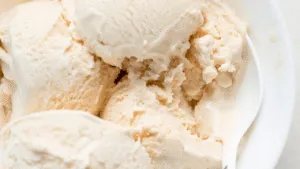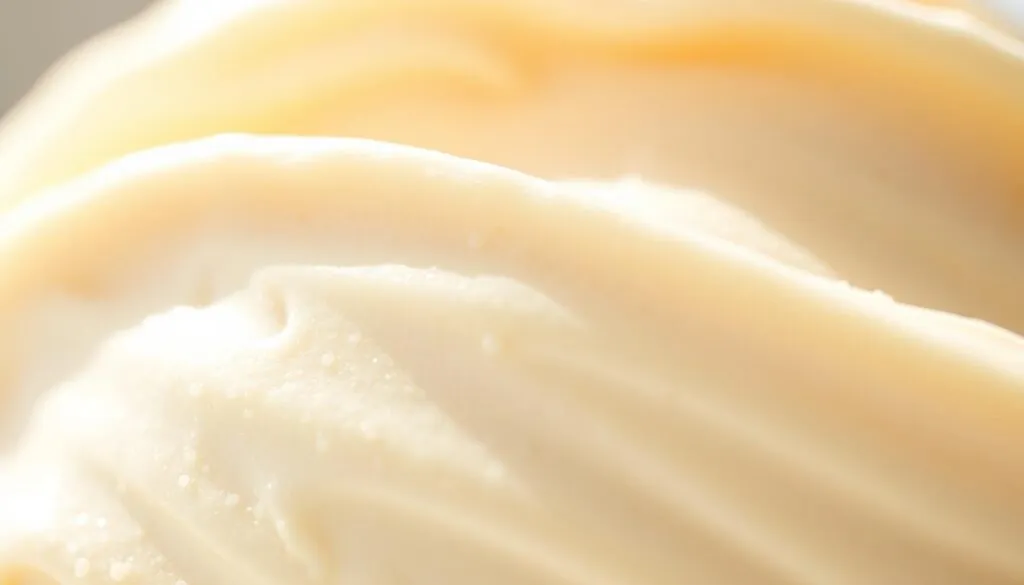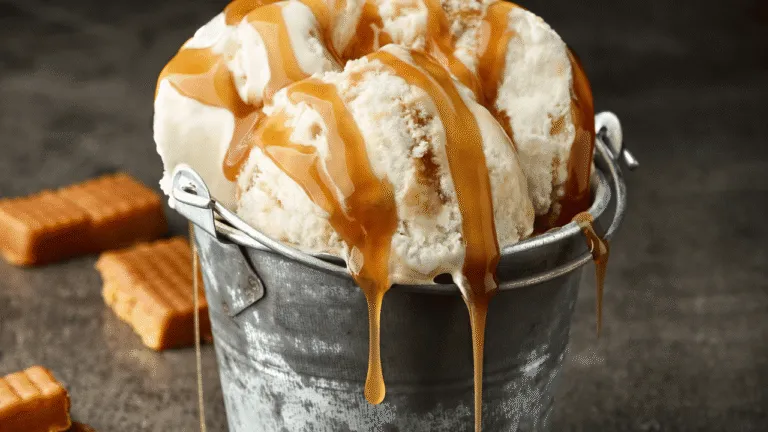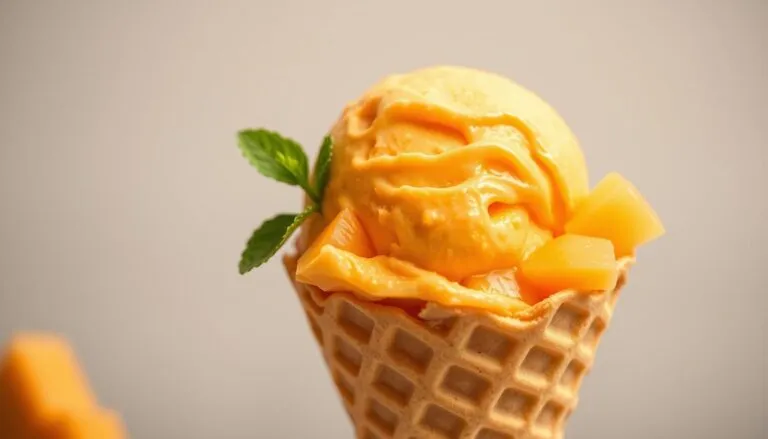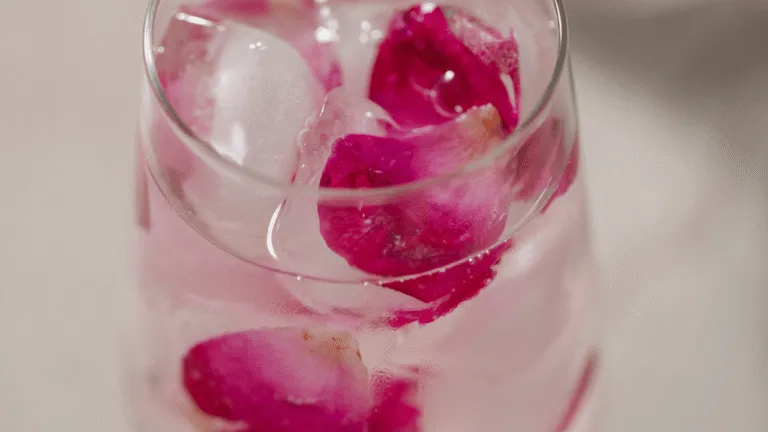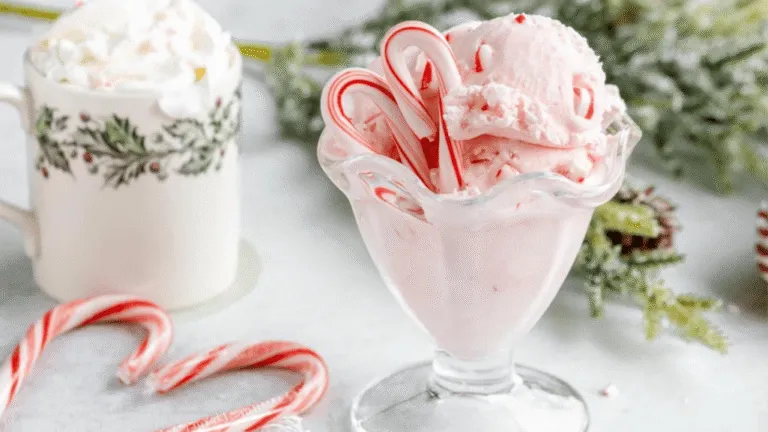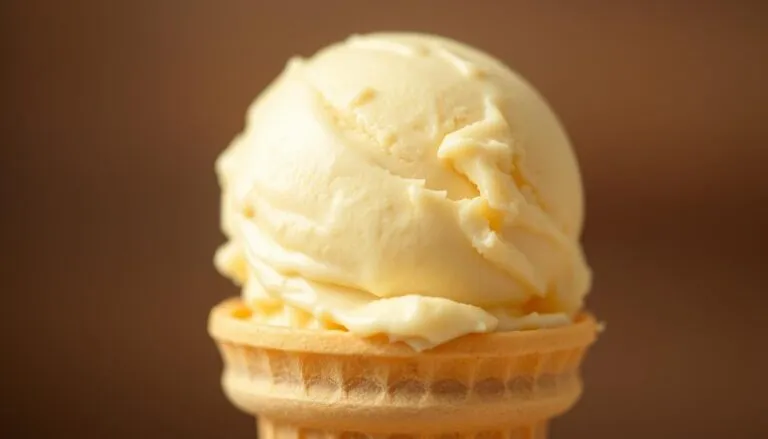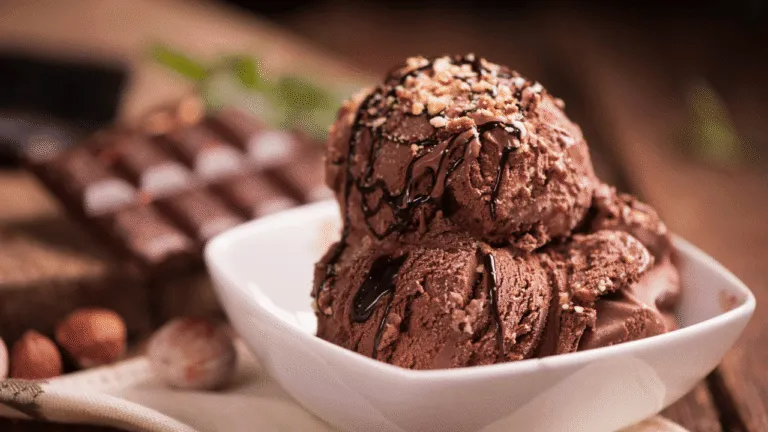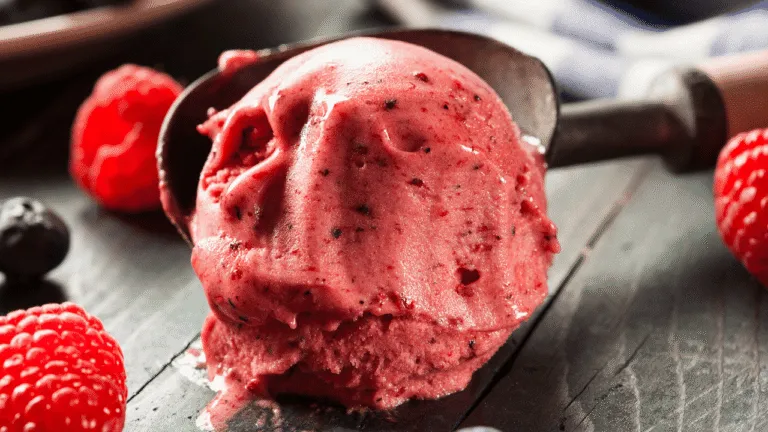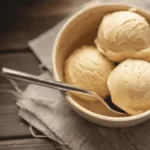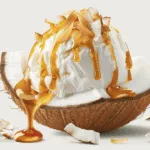Welcome to an adventurous take on frozen dessert where texture becomes part of the story. This section explains why some pints feel sandy or crunchy and how small choices shape each spoonful.
Lactose crystallization can leave a sandy mouthfeel that lingers even after the scoop melts. Repeated warm-and-refreeze cycles let ice crystals grow, and that damages smoothness over time.
Particulates like nuts or cookie pieces shed dust that helps lactose crystals form. Storing pints on a fluctuating shelf or in a door makes those crystals worse. Seal the surface and limit air exposure to cut freezer burn and protect the base.
Expect a mix of food science and kitchen craft. You’ll learn to balance bold flavors with an ultra-smooth base, and to make storage habits that keep texture intentional and delightful.
Key Takeaways
- Gritty Ice Cream.
- Two main culprits: lactose crystallization and ice crystal growth from freeze-thaw cycles.
- Particulates can accelerate sandy texture; choose mix-ins and timing carefully.
- Store pints in steady cold and minimize air exposure to reduce freezer burn.
- Small technique changes keep flavors bright and the base creamy and smooth.
- With a few habits, you can craft textures that add character without unwanted grit.
Gritty Ice Cream
4
servings30
minutes40
minutes300
kcal1
hour10
minutesSmooth vanilla ice cream using everyday ingredients.
Keep the screen of your device on
Ingredients
1 cup 1 heavy cream
1 cup 1 whole milk
1/2 cup 1/2 granulated sugar
1 teaspoon 1 vanilla extract
1/8 teaspoon 1/8 salt
Directions
- In a mixing bowl, combine heavy cream, whole milk, granulated sugar, vanilla extract, and salt until the sugar is fully dissolved.
- Transfer the mixture into a saucepan and heat on medium heat until it begins to steam, stirring occasionally. Do not let it boil.
- Remove from heat and let the mixture cool for about 10 minutes, then transfer to a container and chill in the refrigerator for at least 3 hours.
- Once chilled, pour the mixture into an ice cream maker and churn according to the manufacturer's instructions, usually about 20 minutes.
- Transfer the churned ice cream to a lidded container and place it in the freezer to firm up for at least 2 hours before serving.
- For best results, allow the ice cream to sit at room temperature for a few minutes before scooping.
Recipe Video
Nutrition Facts
- Total number of serves: 4
- Calories: 240kcal
- Cholesterol: 60mg
- Sodium: 50mg
- Potassium: 110mg
- Sugar: 18g
- Protein: 3g
- Calcium: 10mg
- Iron: 0mg
- Thiamin: 0mg
- Riboflavin: 10mg
- Niacin: 0mg
- Folate: 0mg
- Biotin: 0mg
- Phosphorus: 10mg
- Iodine: 0mg
- Magnesium: 2mg
- Zinc: 5mg
- Selenium: 2mg
- Copper: 0mg
- Manganese: 0mg
- Chromium: 0mg
- Molybdenum: 0mg
- Chloride: 0mg
Did you make this recipe?
Tag @https://www.instagram.com/ice_cream_haven/ on Instagram and hashtag it with #IceCreamIceCreamHavens
Like this recipe?
Follow @https://www.pinterest.com/Ice_Cream_Haven/ on Pinterest
Join our Facebook Group!
Follow https://www.facebook.com/icecreamhavens/ on Facebook
The science behind texture: lactose sandiness vs. ice crystals
What you feel on the tongue traces back to chemistry—lactose forming tiny grains or water forming larger crystals. Both change how a scoop melts and how the flavors reach your palate.
Why “sandy” stays sandy: as water freezes, lactose becomes more concentrated in the remaining liquid. When that solution exceeds lactose solubility, microscopic crystals form and persist even as the sample warms. Particulates from nuts or crumbs act as seed points where these crystals begin.
Heat shock and recrystallization: brief warms let small ice crystals partially melt. On refreeze they grow into larger, crunchy structures. Freezer cycling and door placement speed this up, with edges suffering the most swings in temperature.
- Persistent grit after melting = lactose crystals; smooths with warmth = ice crystals.
- Control MSNF, limit high-lactose ingredients, and use stabilizers to prevent sandiness.
- Keep steady cold and avoid frequent openings to slow ice crystal growth.
How to make gritty ice cream the right way: controlled texture without the crunch
A thoughtful recipe and quick hardening let you keep small, lively crystals without unwanted crunch.
Choose smarter ingredients
Balance MSNF and total solids so lactose stays dissolved. Cut back on whey or high‑lactose additives when sandy notes recur.
Process temperatures and time
Aim for a low draw temperature and move pints to rapid hardening immediately. That locks a fine microstructure and limits crystal growth during hold time.
Flavor inclusions and particulates
Prep nuts, cookies, and chocolate by sifting or lightly coating to remove dust. Fold inclusions in gently to avoid creating fines that seed crystals.
Containers and surface protection
Use a snug container, add parchment or plastic over the surface, and reduce headspace to stop moisture migration that roughens texture.
Troubleshooting texture
If grit stays after melting, suspect lactose crystals and adjust ingredients. If the mouthfeel smooths as it warms, focus on handling, chill consistency, and storage to prevent large crystals.
For practical fixes and common production tips see common homemade ice cream issues.
Freezer strategy to keep ice cream smooth at home
Treat the freezer like a climate zone: the back is stable, the door is not.
Placement matters: store in the back, not the door
Keep pints in the back where temperatures stay steady. The door opens a lot and that creates warm periods that let ice crystals grow along the edges of the cream.
Stop melt-refreeze cycles: portion first, skip the microwave
Portion what you’ll eat before serving. That way the whole container does not warm and refreeze, which makes large crystals over time.
Never microwave a whole pint. Instead, soften in the refrigerator for a few minutes or use a quick knife trick to ease scooping without hot spots.
Prevent freezer burn: minimize air exposure and protect the surface
Press parchment or plastic directly on the surface and close a tight lid to limit moisture loss and stale notes. Trim the container or tuck it into a zipper bag to reduce headspace and stabilize the microclimate.
“A few small habits—back-of-freezer storage, smart portioning, and tight seals—save texture and taste.”
- Chill bowls and scoops to reduce thermal shock when serving.
- Organize the freezer to cut door openings and hold steady temperatures.
- Watch for surface frost as a sign of freezer burn and refresh your protection layers.
Conclusion
Intentional choices, and fast, cold handling keep the base velvety and let bold inclusions sing.
Balance ingredients and manage lactose with MSNF. Use smart stabilizers, draw low, and harden rapidly as you move from churn to container. Treat chocolate and nuts gently—shake off dust and fold with care so tiny particulates do not seed crystals.
Seal the surface, right-size the container, and store pints in the cold back of the freezer to slow crystal growth and moisture loss. Portion before serving and avoid microwaving; short warming times protect texture and flavor.
Diagnose by feel: persistent grit points to lactose crystals; crunch that softens shows storage issues. With a few disciplined habits, you keep bold add-ins and clean, confident texture in every scoop.

